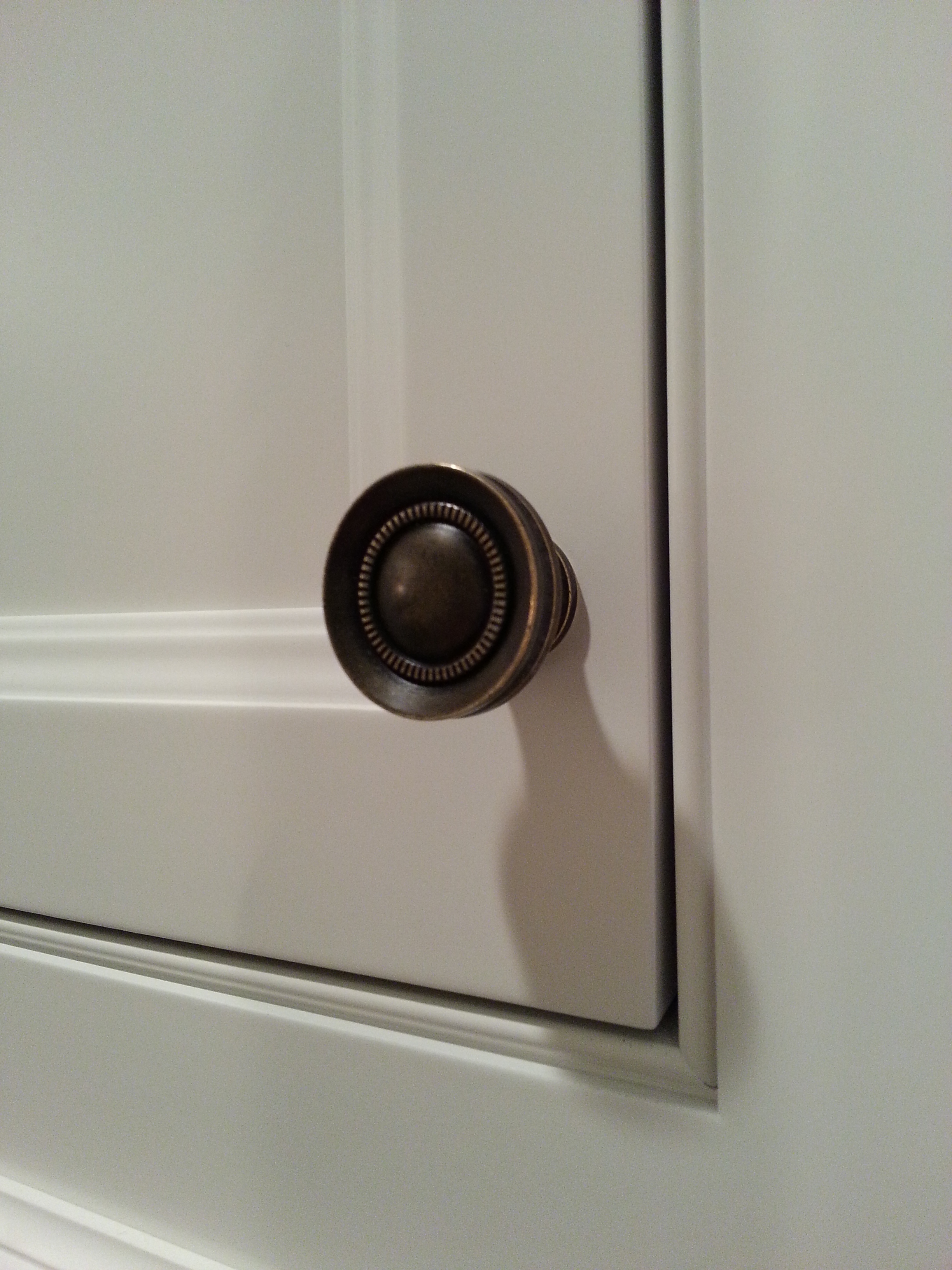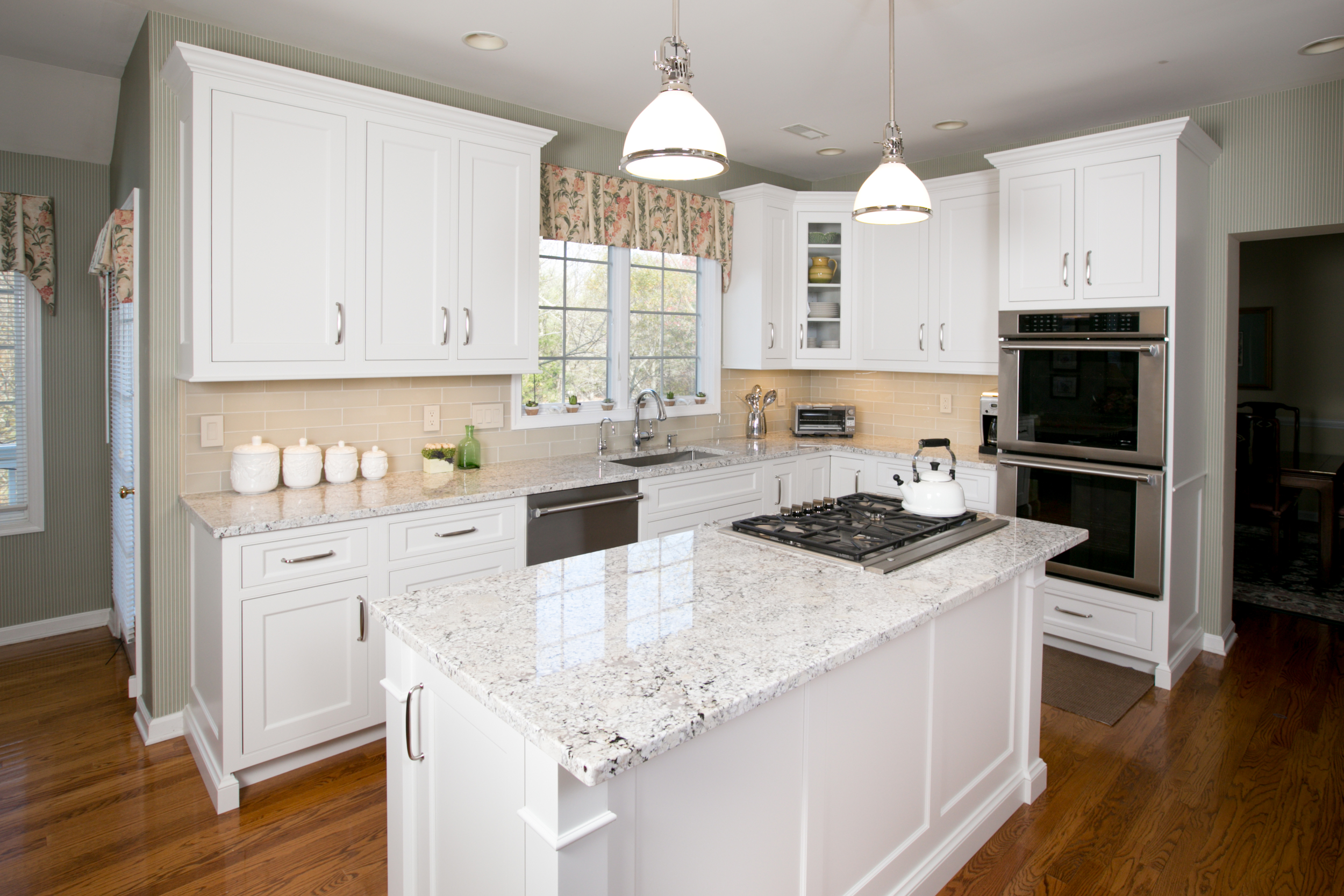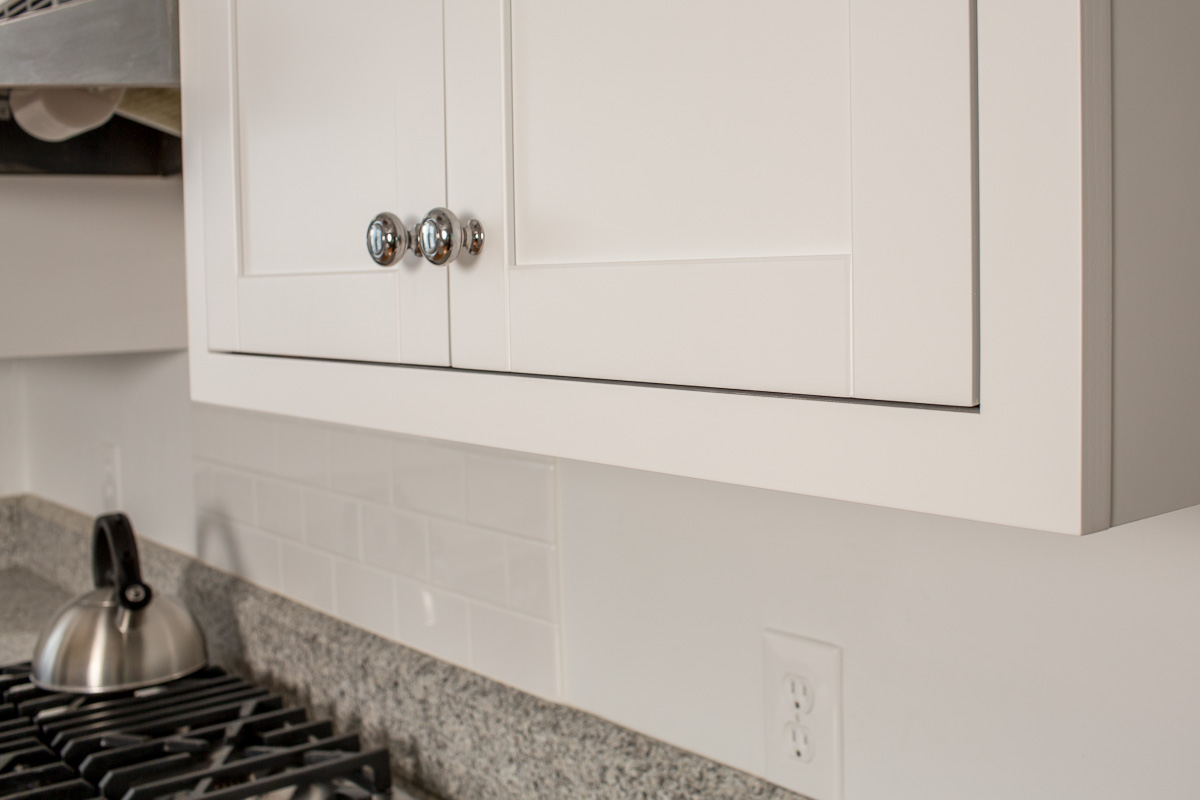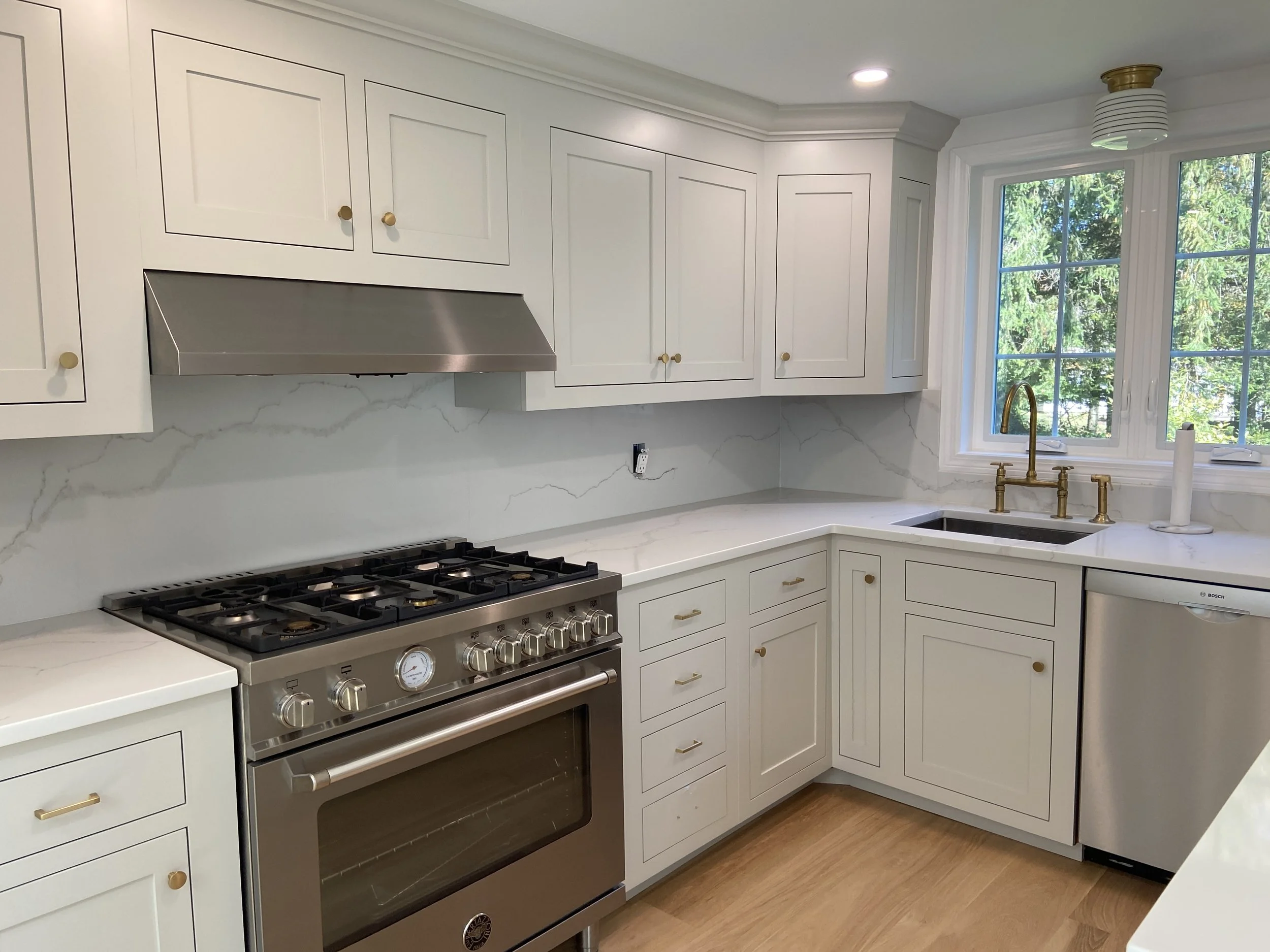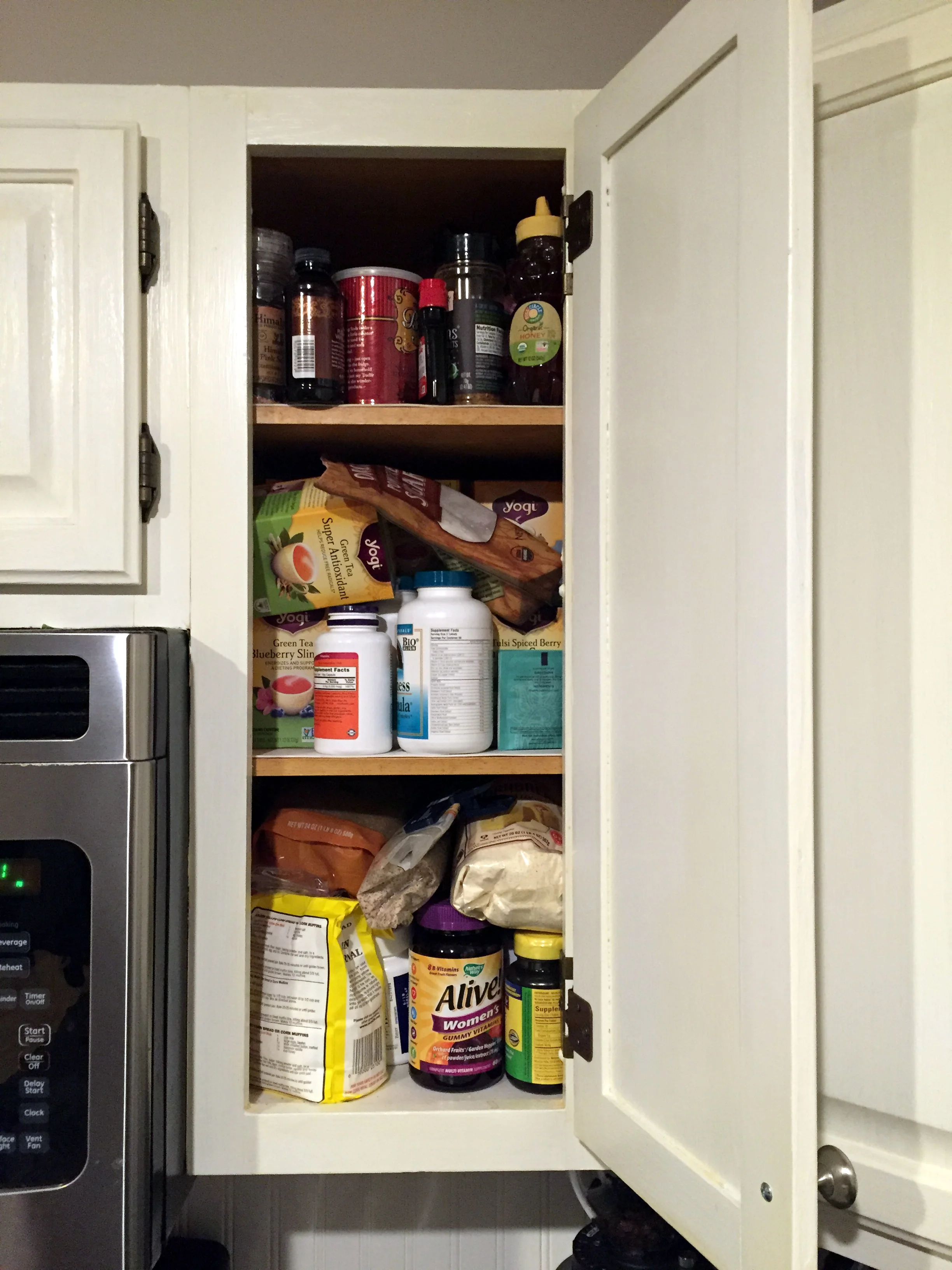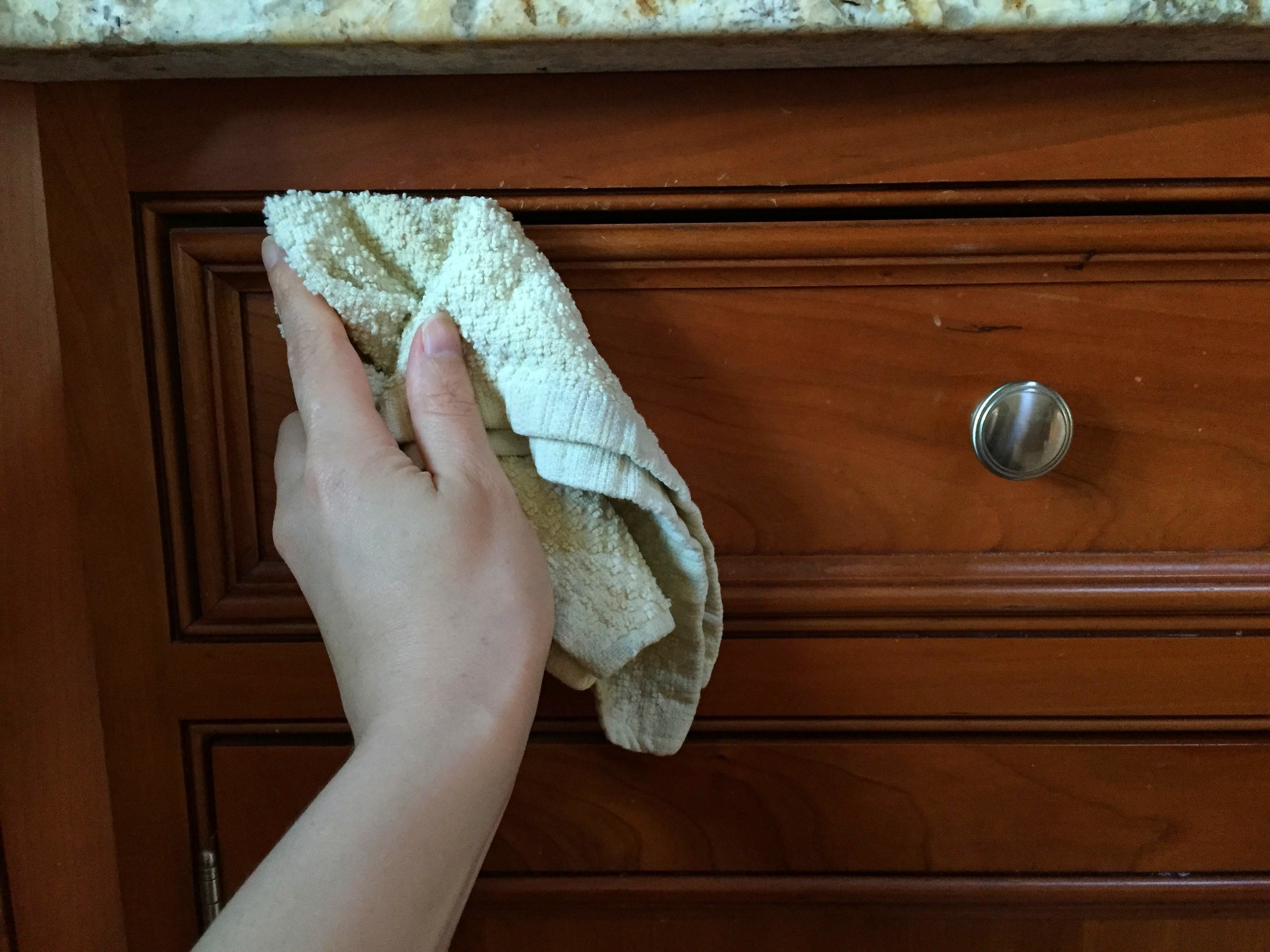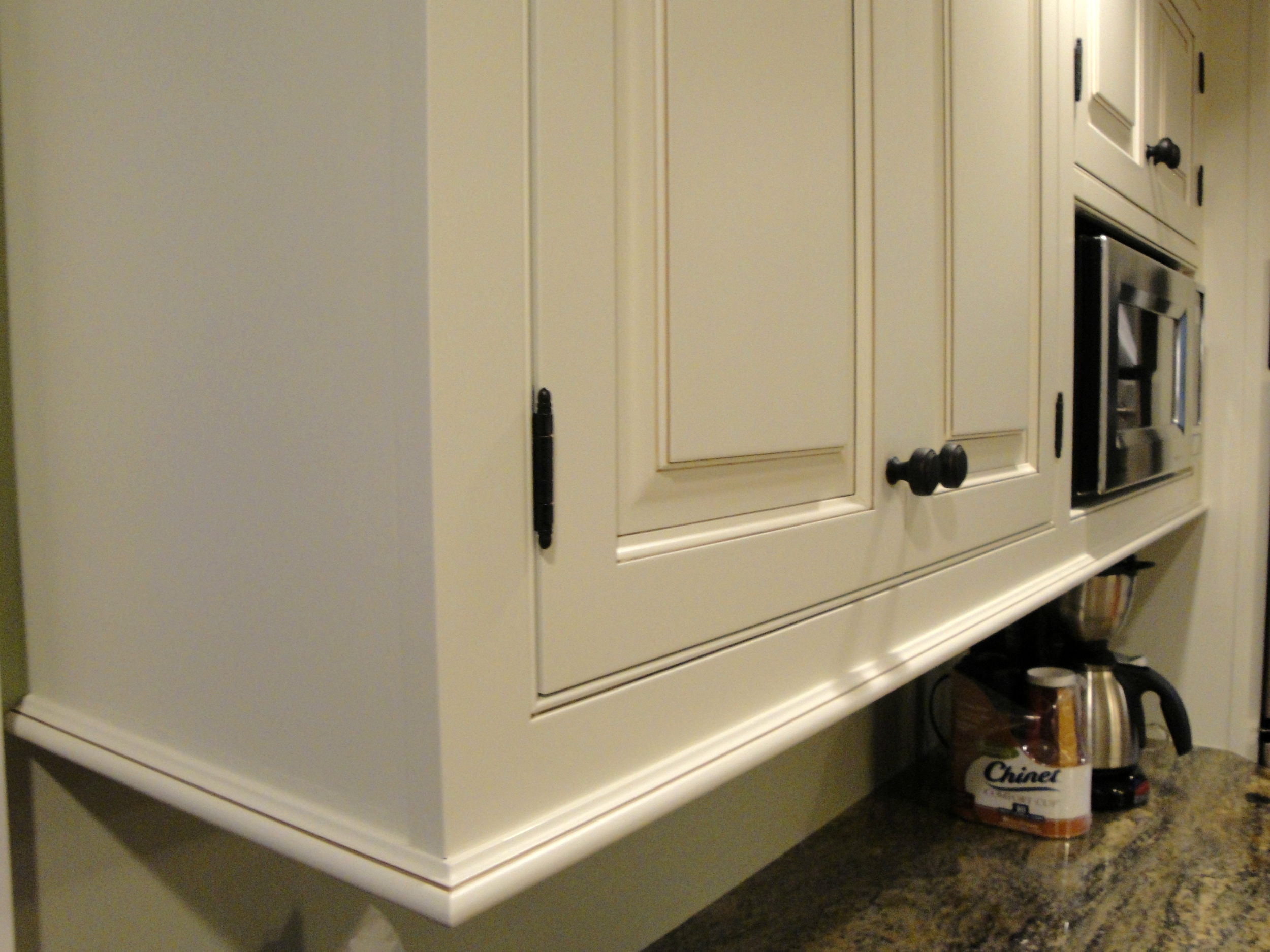So you’ve finally settled on your cabinet layout, wood specie, door style and finish. Now onto the handles!
When thinking about the many possibilities for your cabinetry, it’s easy to get overwhelmed (oil-rubbed bronze, antique pewter, chrome…oh my!) One way to think about hardware is as the “jewelry” of the kitchen, with the power to enhance or completely transform a style. With this in mind, remember our 4 C’s of hardware selection – Class, Color, Cost, and Comfort.
Class: There are generally 2 primary classifications: Knobs and Pulls. Knobs are the classic choice, with a multitude of shapes and finishes. Pulls can create variation and interest, and can range from cup shaped pulls to the more contemporary bar pull. Mixing hardware classes (knobs on doors with pulls on drawers) is a popular option to have the best of both worlds.
Color: Kitchen appliance color (microwave, refrigerator, stove, etc.) is an important consideration when choosing the metallic finish for your hardware. Black and stainless steel typically modernizes a space, while white crisp appliances creating a more classic style. Are you planning on upgrading to a matching set, keeping existing pieces, or mixing in appliance fronts that match your cabinetry? All should play nicely with your hardware selection.
Cost: Similar to jewelry, hardware can range from minimalist to ornate, with matching prices typically between $4 to $12 per piece. If your heart is set on a style that might be a bit pricier than your budget, it might be worth the jump, as it’s a one-time investment that you’ll see and use everyday.
Comfort: Since you’ll be actually using your kitchen, you will want to choose handles that are comfortable for you and your family. This is a secondary feature, but might tip the scales after the above criteria.
Bottomline: While we generally advise our customers to gather pictures of the overall style they want to achieve, we are more than happy to lend our design expertise to your decision-making process.


